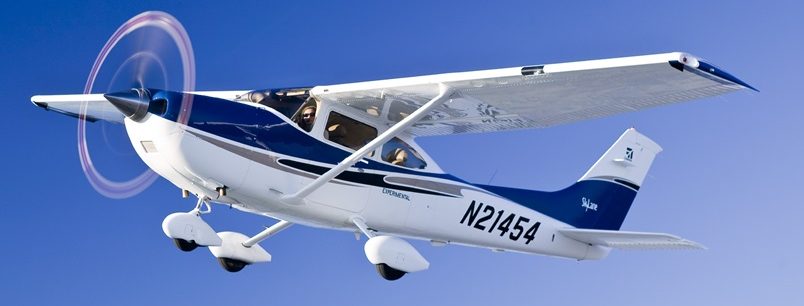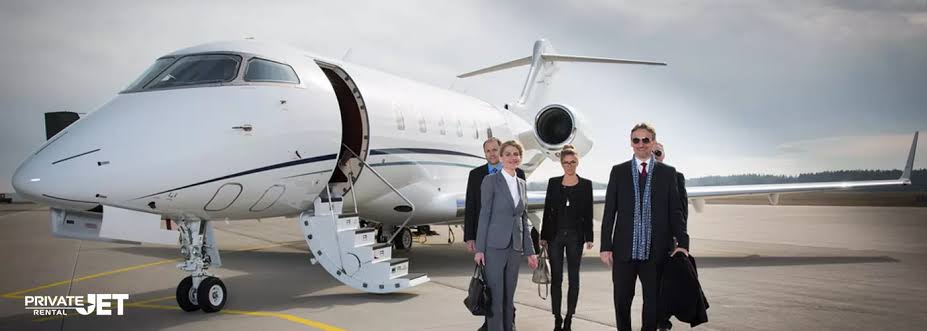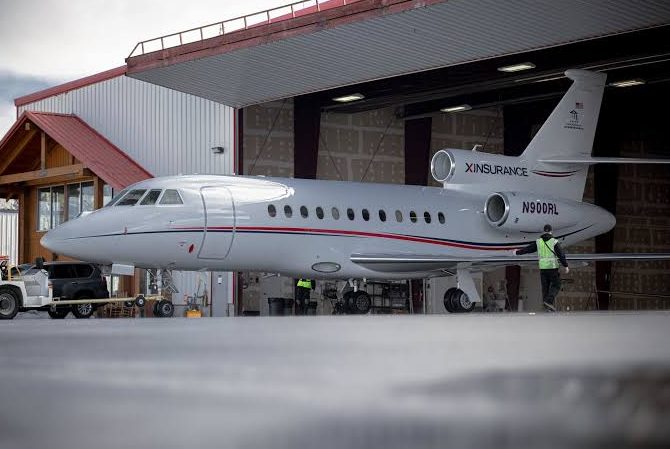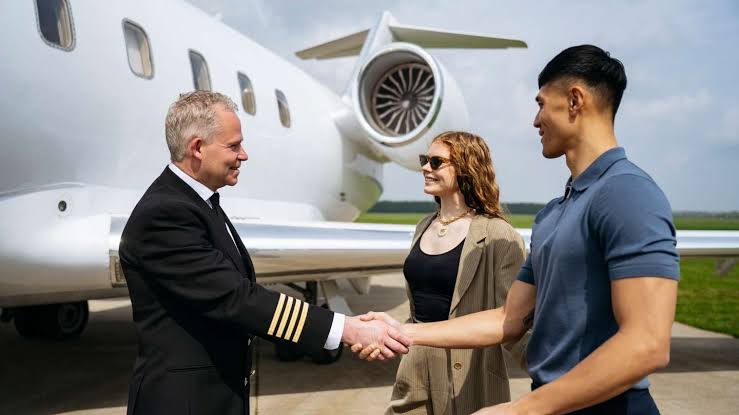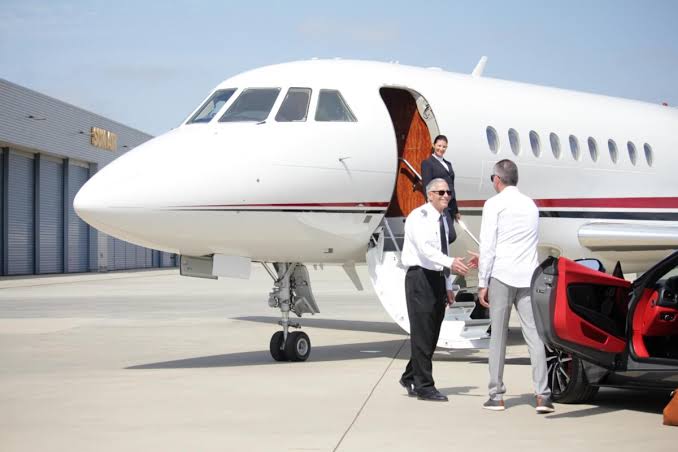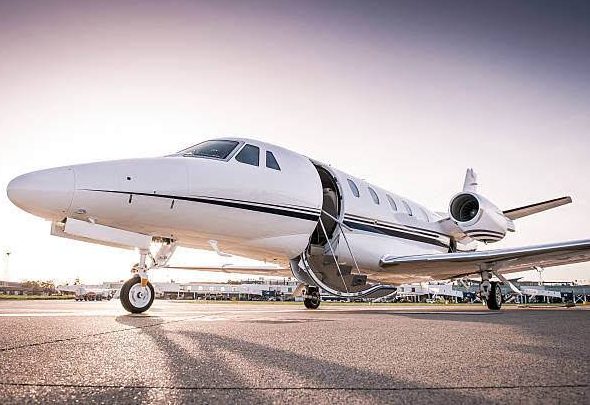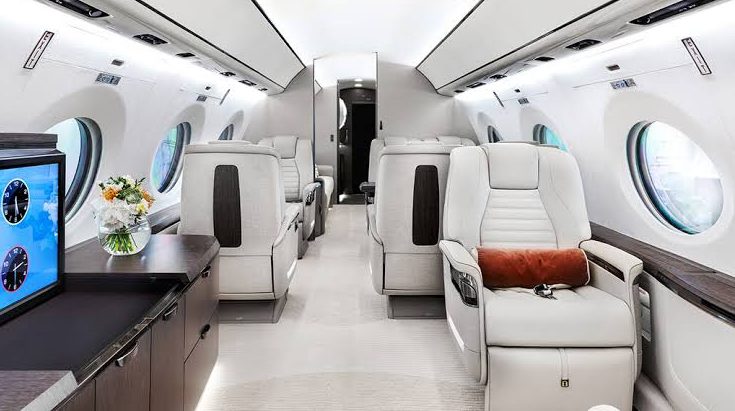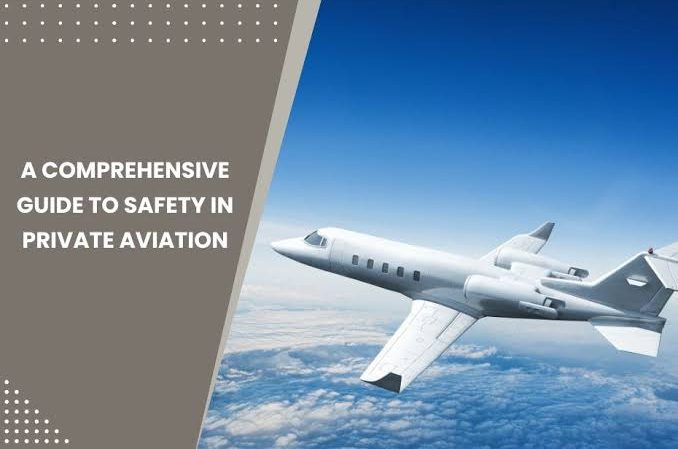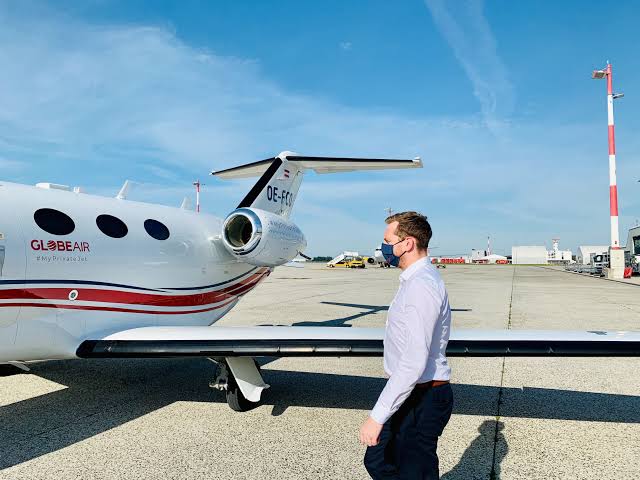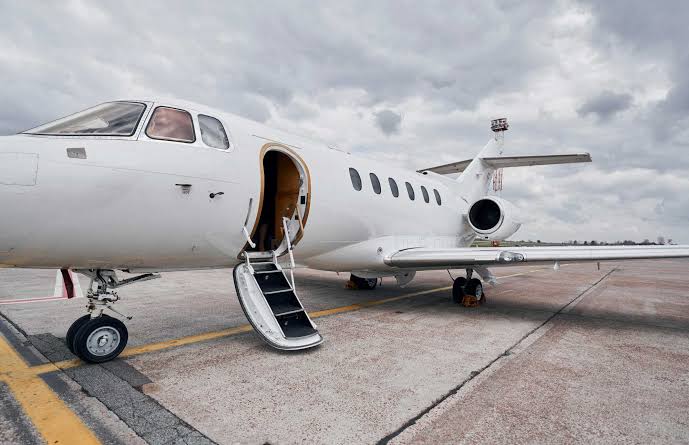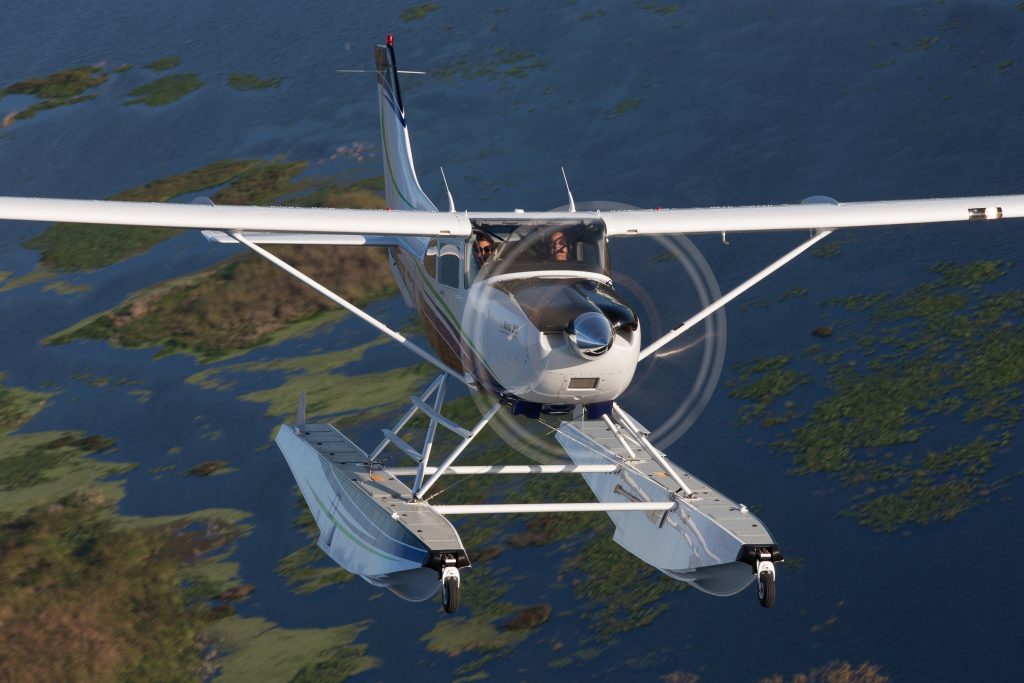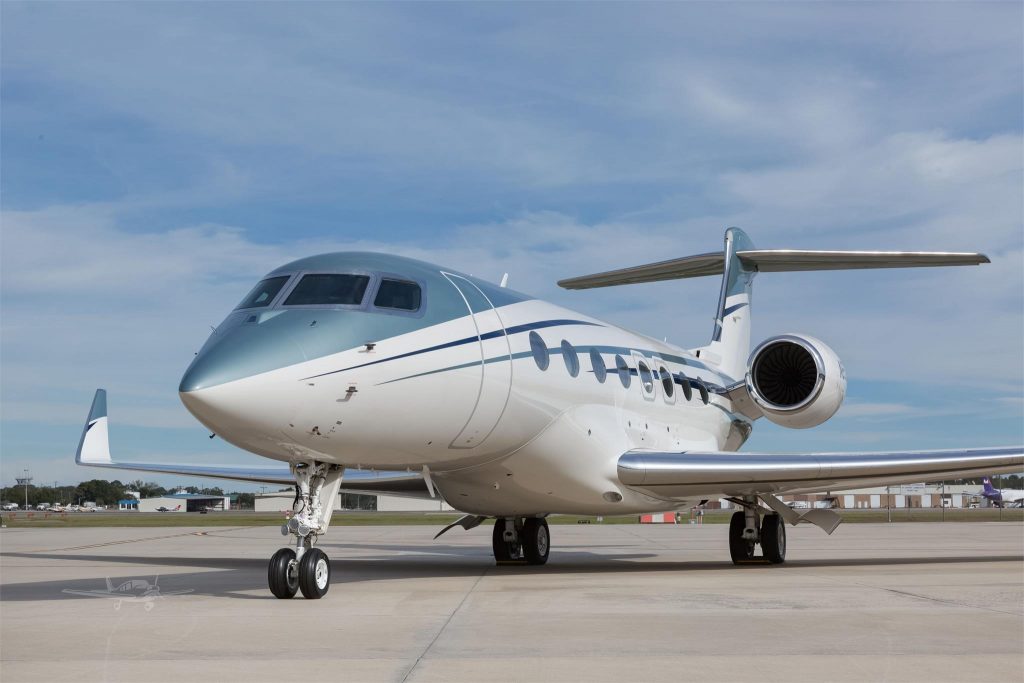Private Jet Security Measures: Ensuring Safe and Secure Travel
In today’s dynamic world, the security in private aviation has taken a significant leap not only in importance but also in complexity. The very charm of private jets can also post security challenges, offering a distinctive set of circumstances that could compromise the safety and privacy of high-net-worth individuals. As we journey through this comprehensive article, we will delve into the key private jet security measures ensuring safe, secure, and exclusive travel for these elite travelers. From pre-flight security protocols to advanced technologies, on-board features, crew training, and even cybersecurity—prepare to navigate the labyrinth of methods and strategies that comprise the safety standards within business aviation. This article also explores how these security measures adhere to regulatory compliance and maintain the delicate balance between utmost security and privacy needs. So, fasten your seatbelts and soar through the landscape of private aviation safety with us.
Pre-Flight Security Measures
Pre-flight security measures are crucial in providing a safe and secure environment for private jet passengers. It sets the ground for ensuring that any security threats are mitigated before the aircraft is set in motion. The process comprises multiple layers, beginning with passenger screening and verification, baggage and cargo inspection, and aircraft security checks.
Passenger Screening and Verification
Passenger screening and verification are critical pre-flight security measures that help ensure the security of a private flight. These procedures go beyond merely checking identification documents. They involve comprehensive background checks of passengers as a standard part of the boarding process. Private jet companies often collaborate with security agencies to confirm the identity and background status of their clients. The measure plays a significant role in preempting potential threats, endorsing the safety of everyone aboard the plane.
Baggage and Cargo Inspection
Baggage and cargo inspection is another crucial aspect of pre-flight security measures. Unlike commercial flights, where passengers’ luggage might be a target for theft or sabotage, the risk associated with private jets is significantly lower. Nonetheless, robust inspection policies are implemented. Baggage is meticulously scanned and physically inspected to ensure no prohibited items are being transported, and security seals are often used to prevent tampering during transit.
Aircraft Security Checks
Lastly, aircraft security checks contribute to ensuring the sound status of the plane and enhancing the security elements onboard. Pre-flight inspections are performed by experienced technicians and cover every part of the airplane, from the engine to the cabin. These checks are intended to confirm that the aircraft is in perfect working condition and that all safety features such as reinforced cockpit doors, emergency response systems, and personal security devices are functional before takeoff. This process assures passengers their safety is the top priority at all stages of their private flight.
Advanced Security Technologies
The world of private aviation is increasingly adopting advanced security technologies. These technological advancements not only provide an extra layer of protection but also streamline security processes, making them less disruptive for passengers without compromising their safety.
Biometric Authentication Systems
Biometric authentication systems have revolutionized the security checks process. Previously, the process was cumbersome and time-consuming as it involved verification of documents and manual checks. Today, however, the use of biometrics has significantly expedited this process. Biometric authentication uses unique physical or behavioral attributes of individuals to verify their identities. This includes features such as fingerprints, facial recognition, and eye retinas or irises. They are not only faster but also more reliable as these features are unique to each individual, significantly reducing the chances of identity fraud.
Encrypted Communication Systems
One of the significant risks in air travel, especially for high-net-worth individuals, lies in communication. The transfer of sensitive data such as flight plans, passenger information, etc., could be prone to interception and misuse. This is where encrypted communication systems come into play. With encryption, any intercepted communication remains unreadable and useless to unauthorized users. This shield of encryption thus ensures that vital information never falls into the wrong hands. Moreover, the use of these systems extends to in-flight Wi-Fi – guaranteeing secure communication even while flying.
Real-Time Flight Tracking and Monitoring
Our technologically advanced age has translated into the capability to track flights in real time. This provides an additional layer of safety as any deviations or anomalies can be spotted immediately, and appropriate responses can be mobilized. Real-time flight tracking and monitoring systems use satellite communication to provide constant updates on the aircraft’s position and flight path. Additionally, predictive weather analyses can give advance warnings about weather challenges, enabling the crew to reroute or delay flights to enhance passenger safety.
The deployment of advanced security technologies in private jet travel is a testament to the industry’s commitment to providing the highest safety levels. These innovations have not only augmented existing security measures but also significantly improved passenger comfort – making private jet journey safer, smoother, and more enjoyable for high-net-worth individuals.
On-Board Security Features
In the realm of private aviation, on-board security features play a critical role in ensuring that high-net-worth individuals can travel safely and securely. Technology advancements have allowed for the creation of a myriad of security mechanisms that only heighten the safety of every flight. Consisting of reinforced cockpit doors, emergency response systems, and personal security devices for passengers, these features contribute significantly to creating an inviolable sanctuary within the skies.
Reinforced Cockpit Doors
Aircraft cockpit doors are the first line of defense to prevent unauthorized access to the flight controls. Thus, they are reinforced with robust materials, designed to resist manual and ballistic attacks, as well as safeguard against possible explosive decompression. Following events of the early 21st century, regulatory bodies worldwide have enforced stricter security standards on cockpit door construction, ensuring every private jet retains its integrity, regardless of potential physical threats.
Emergency Response Systems
Another vital part of on-board security is the inclusion of emergency response systems. These systems may consist of medical kits for immediate health emergencies, safety tools and equipment in the case of evacuation, and several advanced alert mechanisms that communicate directly with ground control for immediate actions. Enhanced with modern technology, these systems are capable of detecting potential hazards and promptly initiating protocols to protect passengers and crew.
Personal Security Devices for Passengers
Private aviation goes the extra mile in ensuring the personal safety of their affluent clients. This involves incorporating individual security devices for passengers onboard. High-tech features such as personal alarm buttons, GPS-enabled devices, and safety apps on passengers’ electronic devices are a few commonly used forms of personal security devices. Besides, a growing number of private jets are equipped with advanced CCTV systems for added security.
With the continued advancements in security technology, passengers can rest assured that every flight they undertake on a private jet is as safe as it is luxurious. The importance of these on-board security features can’t be overstated, as they contribute significantly to the overall safety and peace of mind experienced by passengers.
Crew Training and Protocols
Private jet travel is synonymous with luxury, but it also requires a high level of security. For this reason, an essential part of private jet security measures includes rigorous crew training and robust protocols.
Security Awareness Training
The first line of defense in ensuring the safety of private jet travel is an informed and vigilant crew. Security awareness training programs are designed to equip the crew with the necessary knowledge to identify potential security threats promptly. These training sessions focus on teaching the crew about various types of risks, from disruptive passengers and unauthorized access to more grave concerns like hijacking and terrorist attacks. Security awareness training takes into account real-world scenarios and uses simulations to help the crew understand how to respond effectively.
Emergency Response Procedures
In addition to knowing how to prevent security breaches, it’s imperative for private jet crews to know how to handle emergencies when they arise. Emergency response procedures include guidelines on how to coordinate with air traffic control, activating emergency systems on the aircraft, and providing first aid. These procedures are regularly tested through drills to ensure the crew’s preparedness in case of any unforeseen situations.
Threat Assessment and Management
Threat assessment and management training provide the crew with the ability to accurately assess and respond to threats. This training involves the analysis of potential risks, the likelihood of their occurrence, and the degree of their potential impact. The crew also learns how to manage identified threats effectively, which can involve everything from mitigating the threat to evacuation procedures. From identifying red flags in passenger behavior to dealing with technical malfunctions, threat assessment and management form the backbone of a strong safety culture in private aviation.
In conclusion, investing in comprehensive crew training and establishing solid security protocols are necessary measures to ensure the safe and secure travel of high-net-worth individuals who prioritize both privacy and safety in their travels.
Ground Security at Private Terminals
Private aviation requires stringent ground security measures to ensure the safety of passengers, crews, and aircraft. This includes comprehensive access control systems, rigorous surveillance and monitoring, and secure parking and hangar facilities.
Access Control Systems
As a quintessential part of ground security at private terminals, access control systems serve to screen all individuals entering and exiting the premises. These systems utilize advanced technologies such as biometric scans, ID verifications, and smart card access, making unauthorized access virtually impossible. They also include thorough checks of vehicles and luggage further fortifying the defense against potential threats.
Surveillance and Monitoring
Even with robust access control systems in place, continuous surveillance and monitoring are essential for enhanced security. Comprehensive CCTV coverage in all surrounding areas of the terminal, including entrance gates, hangar areas, and parking lots, ensure a real-time check on activities. Sophisticated systems can detect unusual behavior or unauthorized intrusion, triggering instant security alerts.
Secure Parking and Hangar Facilities
Secure parking and hangar facilities are key to safeguarding aircraft when not in flight. Hangars are equipped with multi-layered security protocols, including specialized personnel, video surveillance, and intrusion detection systems. Additionally, secure parking areas for passengers and crew adds another level of security, preventing unauthorized access to parked vehicles.
By integrating these three critical elements of ground security, private terminals can ensure a safe, secure environment for high-net-worth individuals traveling by private jet. The primary goal is to create a seamless and stress-free experience for travelers, making safety a top priority, without compromising the convenience and exclusivity of private aviation.
Cybersecurity in Private Aviation
Cybersecurity is a critical aspect of private aviation, and it encompasses a variety of measures designed to protect sensitive information and ensure secure communication. Below, we discuss the specifics of cybersecurity in the context of private jet travel.
Protection of Flight Data and Communications
Protecting flight data and communications is a primary concern in private aviation. With so much critical data transmitted before and during flights, from flight plans and passenger information to onboard communications, it’s essential to ensure that this data is secure.
Private jet service providers implement advanced encryption techniques and secure data transmission protocols to safeguard flight data and communications. Secure communication channels are set up for discussions between pilots, ground control, and air traffic management. With cyber threats on the rise, airlines are investing more in security measures, such as firewalls, intrusion detection systems, and regular security audits to prevent unauthorized access and ensure data integrity.
Secure Booking and Payment Systems
Private jet travel often involves high-value transactions, making secure booking and payment systems indispensable. Robust encryption methods like SSL encryption are used to secure online transactions and protect sensitive data from cyber threats. Customer information is treated with the utmost confidentiality, with robust data security practices in place.
In addition to secure online transactions, private jet operators are increasingly adopting digital identity verification methods to prevent fraudulent bookings. They may also employ advanced online security checks, such as two-factor authentication, to secure user accounts and sensitive transaction data.
Safeguarding Personal Information of High-Profile Clients
Private jets often cater to high-net-worth individuals, celebrities, and corporate executives, making the safeguarding of personal information vital. Privacy and confidentiality are significant selling points for private jet operators, and they go to great lengths to protect their clients’ details.
High-end private jet providers handle customer data with careful consideration, ensuring secure storage, controlled access, and strict confidentiality rules. Regular cybersecurity audits are carried out to identify vulnerabilities and rectify them proactively.
Through dedicated cybersecurity measures, private jet services can offer peace of mind to customers, ensuring their personal details remain private and their itineraries and flight data stay confidential. Good cybersecurity measures are vital in maintaining trust and confidentiality in private aviation, safeguarding not only the flights but also the passengers onboard.
Regulatory Compliance and Industry Standards
In the global field of business aviation, private jet security is highly influenced by international and national legal frameworks, along with industry-specific best practices standards. Providing a safe and secure travel experience for high-net-worth individuals involves complying with these robust regulatory matrices.
International Aviation Security Regulations
International aviation security regulations play a significant role in shaping private jet security standards. These regulations serve as a global consensus on the essential requirements for secure aviation procedures. The International Civil Aviation Organization (ICAO), a specialized agency under the United Nations, sets these broad standards with its member states’ collaboration. Private aviation operators must diligently align with these regulatory mandates to operate across international borders seamlessly.
Business Aviation-Specific Security Guidelines
In addition to international regulations, private jets must also comply with sector-specific guidelines and standards. Several industry-focused organizations, such as the National Business Aviation Association (NBAA), offer comprehensive security guidance for business aviation. These guidelines focus specifically on the unique security considerations in private aviation, from passenger confidentiality to robust aircraft security measures. Adherence to these specific guidelines helps ensure that all security bases are covered, beyond what is mandated by general aviation regulations.
Compliance Audits and Certifications
Compliance audits and certifications are critical tools for enforcing industry regulations and guidelines. Regulatory bodies often conduct periodic audits to ensure active compliance with both international and domestic security standards. Furthermore, private jet operators can attain various certifications, such as the IS-BAO (International Standard for Business Aircraft Operations) or Wyvern Standard, which highlight their commitment to safety and security. These audits and certifications not only enhance credibility but also play a vital role in maintaining the highest levels of safety in private jet operation.
In conclusion, regulatory compliance and adherence to industry standards form the backbone of private jet security. Understanding and robustly implementing these regulations and guidelines is crucial for operators aspiring to deliver secure and safe private jet travel services.
Risk Assessment and Management
Security aboard private jets doesn’t stop after the flight. Real-time risk assessment and management are crucial components that ensure passengers’ safety from potential threats while promoting efficient responses during emergencies.
Identifying Potential Security Threats
Identifying potential security threats forms a cornerstone for robust risk management. Private aviation security teams leverage sophisticated tools and databases to decipher patterns and connections, which might pose a threat. It could involve analyzing social media chatter, intelligence reports, or high-risk locations and situations. Therefore, comprehensive and timely awareness of possible dangers guarantees better preparedness and mitigation strategies.
Developing Customized Security Plans
Once potential threats are identified, developing a customized security plan becomes paramount. These plans are tailored to individuals’ profiles and specific travel needs, ensuring a smooth, uncompromised travel experience. They incorporate various aspects such as onboard security, ground support, contingency planning, and response protocols in case of emergencies. By designing a plan that addresses the identified threats, private jet travel can be both secure and smooth, catering to the diverse needs of high-net-worth individuals.
Continuous Risk Evaluation and Mitigation
A compliant security measure doesn’t rest after developing a security plan; constant monitoring and evaluation are crucial. In-flight and ground teams must remain vigilant, adapting strategies as risks evolve or new threats emerge. Furthermore, technological advancements play a significant role in supporting continuous risk evaluation, utilizing real-time data feeds, artificial intelligence, and predictive analytics to anticipate and neutralize threats. Thus, the safety of passengers in private aviation is maintained through constant risk evaluation and mitigation. Regular security audits and drills could help ensure the readiness of the response teams while maintaining optimal security conditions.
Risk assessment and management forms the backbone of security measures in private aviation. Through identifying threats, forming robust security plans, and maintaining continuous risk evaluation and mitigation, private jets offer the safest and most secured travel experiences for high-net-worth individuals. By staying a step ahead of threats and responding promptly to emergencies, private jet security indeed ensures a secure and peaceful journey in the skies.
Privacy Considerations for High-Net-Worth Individuals
When indulging in the luxury and convenience of private jet travel, the high-net-worth individuals are also keen to ensure that they can travel with absolute discretion. Privacy is paramount, and this comprises everything from the manner in which they book their private jet, to who they share their travel plans with, and how their data is handled post-flight.
Maintaining Confidentiality During Travel
The first aspect of privacy comes down to the capability of maintaining confidentiality during travel. With bespoke tracking systems and a closed network for all communications, charters offer an environment where high-profile travelers can conduct sensitive business meetings or simply relax, free from prying eyes. To this end, many private jet companies provide a guarantee that flight details and passenger identities are kept confidential. This is achieved by keeping a stringent check on the personnel who have access to this information. Strict non-disclosure agreements are also applied to staff, ensuring complete discretion.
Strategies for Avoiding Unwanted Attention
Avoiding unwanted attention, both from the media and the general public, is another major concern for high-net-worth individuals. Private jet travel offers that level of discretion. The secluded nature of private terminals, paired with highly secure transfer services, significantly reduces the potential for unnecessary attention. This is an essential aspect of the travel for many influential figures, particularly those in the public eye or in possession of sensitive information.
Balancing Security with Privacy Needs
The marriage of optimal security and privacy is a delicate balance to maintain in private aviation. While robust security measures are non-negotiable, they should not compromise the privacy of passengers. Private jet companies employ various means to achieve this balance. These include secure online platforms for transactions, ensuring minimal data exposure, conducting background checks on flight and ground crew, and implementing strict access control measures on private terminals. Consequently, high-net-worth individuals can enjoy the utmost privacy without compromising on their security needs.
Emergency Response and Crisis Management
Providing an immediate and effective response in the face of emergencies is crucial in safeguarding passengers, crew members, and aircraft. Thus, strong emergency response and crisis management strategies are at the core of private jet security measures.
Developing Comprehensive Emergency Plans
Preparing ahead for unforeseen circumstances is pivotal for mitigating the potential adverse effects of emergencies. Hence, a comprehensive emergency plan that fully meets the needs and evaluates the hazards unique to private aviation is a primary security measure. These plans involve critical aspects such as emergency evacuation procedures, medical emergencies, turbulence management, fires, equipment failure, and navigational errors. Regularly updating these plans and rehearsing them through drills help ensure that the crew is well-prepared to handle crises effectively.
Coordination with Local Authorities and Security Agencies
Collaboration with local authorities and security agencies plays a crucial role in ensuring an efficient and swift response during emergencies. Aircraft security staff, local law enforcement agencies, airport security teams, and national aviation authorities must all collaborate to ensure the highest level of safety for private jet passengers. Clear and direct communication lines are established for rapid coordination during emergencies, and protocols are in place to execute swift on-ground responses when the aircraft is airborne.
Communication Protocols During Security Incidents
Transparent, immediate, and direct communication is essential when managing security incidents during private jet travel. Pilots, co-pilots, and cabin crew should be trained to convey emergency situations to passengers without causing panic. Moreover, ground crew and security teams should also be informed of the situation promptly, keeping them ready to handle the situation as soon as the aircraft lands. Training scenarios often involve managing possible hijack situation, handling bomb threats, and dealing with unruly passengers, allowing staff to be fully prepared for a variety of security incidents.
Security Measures for International Travel
With private jets often crossing multiple national boundaries, it’s crucial to understand varying security requirements across countries, navigate complex customs and immigration procedures, and ensure secure ground transportation at destinations.
Understanding Varying Security Requirements Across Countries
Different countries have diverse aviation security regulations that private jet operators must abide by. These regulations might include strict controls over passport and visa checks, passenger screening, baggage inspections, and other standards relating to private aviation safety. To ensure a safe and secure flight, it’s essential for private jet operators to be familiar with and abide by the security directives of each country they fly into.
For instance, a private flight bound for the USA may require passengers to submit Advance Passenger Information (API), whereas a flight to the EU states might necessitate additional information under the Passenger Name Record (PNR) program. These requirements, while ensuring the safety of passengers and the aircraft, also protect the sovereignty of countries and their airspace.
Navigating Customs and Immigration Procedures
Apart from security requirements, successfully navigating customs and immigration procedures is an integral part of international private jet travel. One considerable time-saving benefit of private air travel is the potential for expedited clearance procedures. Some private airports and terminals, or FBOs, have in-house customs and immigration facilities that significantly streamline the process.If not, the aircraft may need to be routed through an airport of entry where such facilities are available before proceeding to its final destination.
However, navigating these procedures requires intimate knowledge of each country’s customs and immigration protocols. Civility, the accuracy of papers, strict adherence to laws concerning import/export of certain goods, and proactive communication with relevant authorities can go a long way in successful navigation through these processes.
Ensuring Secure Ground Transportation at Destinations
Security consciousness should not end once passengers disembark from a private jet. Ensuring secure ground transportation at the destination greatly reduces vulnerability to unforeseen incidents. It is often recommended to hire trusted local chauffeur services or use vehicles with a reliable security system installed.
Moreover, high-net-worth individuals and VIP passengers may benefit from professional security services that enhance safety both in transit and at their destination. Equally important, planning optimal routes, understanding local traffic conditions, and getting the security status of the destined place in advance can complement the high-security standards maintained during the journey itself.
Balancing the luxury and convenience of private jet travel with comprehensive safety measures is vital. Therefore, whether you’re flying within your country, crossing continents, or navigating intricate airspace regulations, a thorough understanding of international security measures can take the stress out of travel and help ensure a safe journey.
Cost Considerations for Enhanced Security
When discussing private jet security measures, it’s essential not to overlook the financial aspect. Balancing high-level protection with budgetary constraints is a challenge faced by many high-net-worth individuals and their security teams.
Balancing Security Needs with Budget Constraints
Effective security is an investment, and often a costly one. Although cost should not hinder security measures, it’s realistic to accept that budgets may not allow for every possible enhancement. Therefore, it is critical to conduct threat assessments that provide insights on which security aspects require priority attention. In addition, adopting a phased implementation approach should be considered to steadily build security levels while managing costs effectively. Lastly, leveraging technology can provide high-impact security at relatively lower costs than a fully manual approach.
ROI of Investing in Advanced Security Measures
Investing in advanced security measures will come at a cost but can provide substantial returns on investment (ROI). This is especially true when considering potential losses due to security breaches, such as theft, kidnapping, or compromised privacy, which can be detrimental to personal status, business reputation, and cause immense emotional distress. Advanced security measures are no longer luxuries but necessities for high-profile individuals who can be targets for various criminal activities. The peace of mind that comes with a secure, safe travel environment can indeed outweigh the costs.
Insurance Considerations for High-Security Private Jet Travel
Insurance plays a significant role in the security plan for private jet travellers. It can act as a financial net, covering the costs that arise from unforeseen security incidents. However, it is essential that the insurance policy selected offers adequate coverage for the unique risks associated with private aviation.
High-security private jet travel can imply a higher risk factor, which may impact the cost and coverage of insurance policies. It is crucial to work with reputable insurance providers who understand the nuances of private aviation and security needs, as they can offer tailored policies that adequately cover these risks. Overall, insurance should blend seamlessly into the broader security strategy, acting as a financial safety net without replacing the need for robust preventive measures.
Future Trends in Private Jet Security
As the aviation industry continues to evolve, so too do the measures put in place to safeguard private jets and their passengers. Here are some of the key future trends in private jet security that may become prevalent in the years to come:
Emerging Technologies in Aviation Security
As technology advances, so do the capabilities of security systems used in private aviation. Facial recognition technology and thermal imaging cameras are among the newly emerging technologies being deployed for enhanced security. In some instances, drones are being utilized as eyes in the sky to better monitor airport premises, especially in areas where human monitoring might pose a challenge. The referred technologies help ensure that private jet security continues to improve, adapt, and stay one step ahead of potential threats.
Predictive Analytics for Threat Prevention
Predictive analytics is another area where private jet security can and is expected to benefit enormously. By analyzing patterns and trends in historical and real-time data, predictive analytics tools can help anticipate potential security lapses before they occur. For instance, unusual patterns in passenger behavior, baggage weight, or even changes in a plane’s environment could all raise alerts, allowing time for further investigation and preemptive action if necessary. This proactive approach makes threat prevention more practical, precise, and efficient.
Integration of AI and Machine Learning in Security Systems
Artificial intelligence (AI) and machine learning have become a central part of many industries, and private aviation security is no exception. AI technologies offer functionality that can analyze patterns, recognize faces, and even detect weapons. AI-powered systems can also automate many processes, freeing up human agents to focus on more complex tasks.
Machine learning, a subset of AI, has the potential to further revolutionize private aviation security. Over time, these systems can ‘learn’ and improve their performance without being explicitly programmed to do so. This means that as more data is gathered and analyzed, the security system gets smarter and more capable.
Understanding these future trends in private jet security can help operators, owners, and passengers stay abreast of industry changes, thus enabling them to facilitate more informed security decisions. As technology continues to develop, one can expect to see even more impressive tools at our disposal for ensuring the safety and security of private jet travel.
